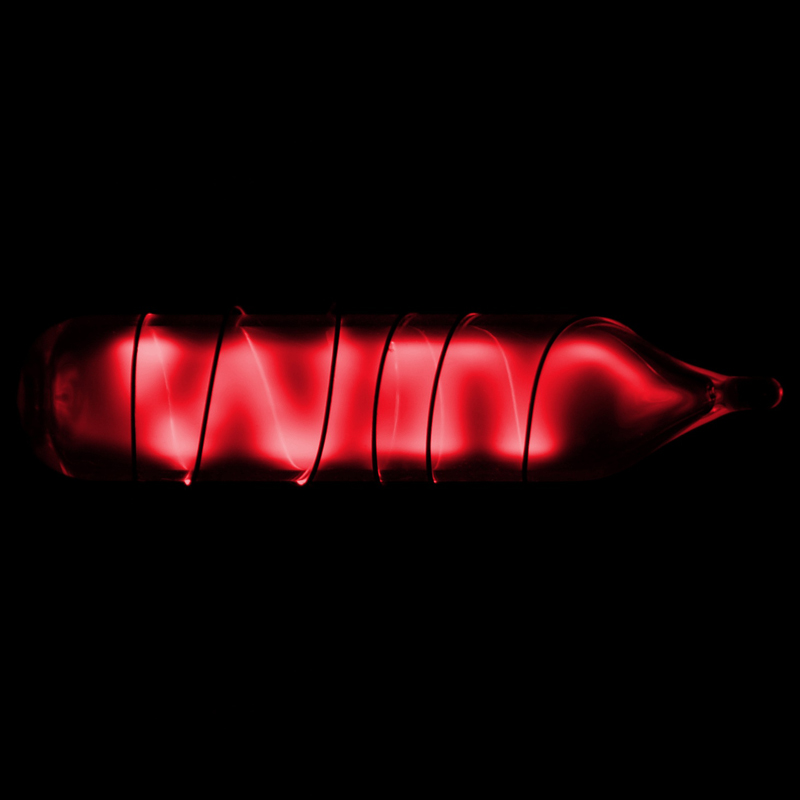Radono
86
Rn
Grupo
18
Perio
6
Bloko
p
Protonoj
Elektronoj
Neŭtronoj
86
86
136
Ĝeneralaj Propraĵoj
Atoma Nombro
86
Atommaso
[222]
Amasa Nombro
222
Kategorio
Noblaj gasoj
Koloro
Senkolora
Radioaktiva
Jes
The name was derived from radium; called niton at first, from the Latin word nitens meaning shining
Kristala Strukturo
Neniu
Historio
Radon was discovered in 1900 by Friedrich Ernst Dorn in Halle, Germany.
He reported some experiments in which he noticed that radium compounds emanate a radioactive gas.
In 1910, Sir William Ramsay and Robert Whytlaw-Gray isolated radon, determined its density, and determined that it was the heaviest known gas.
He reported some experiments in which he noticed that radium compounds emanate a radioactive gas.
In 1910, Sir William Ramsay and Robert Whytlaw-Gray isolated radon, determined its density, and determined that it was the heaviest known gas.
Elektronoj per ŝelo
2, 8, 18, 32, 18, 8
Elektrona Agordo
[Xe] 4f14 5d10 6s2 6p6
Upon condensation, radon glows because of the intense radiation it produces
Fizikaj Propraĵoj
Fazo
Gasa
Denso
0,00973 g/cm3
Fandpunkto
202 K | -71,15 °C | -96,07 °F
Bolpunkto
211,3 K | -61,85 °C | -79,33 °F
Varmo de Fuzio
3 kJ/mol
Varmo de Vaporiĝo
17 kJ/mol
Specifa Varmo Kapacito
0,094 J/g·K
Krusta Abundo
Neniu
Universa Abundo
Neniu

CAS Nombro
10043-92-2
PubChem Kunmetita Identiga Nombro
24857
Atomaj Propraĵoj
Atoma Radiuso
120 pm
Kovalenta Radiuso
150 pm
Elektronegativeco
-
Potencialo de jonigo
10,7485 eV
Atoma Volumo
50,5 cm3/mol
Termika Kondukto
0,0000364 W/cm·K
Oksidaj Ŝtatoj
2, 4, 6
Aplikoj
Radon is used in hydrologic research that studies the interaction between ground water and streams.
Radon has been produced commercially for use in radiation therapy.
Radon has been used in implantable seeds, made of gold or glass, primarily used to treat cancers.
Radon has been produced commercially for use in radiation therapy.
Radon has been used in implantable seeds, made of gold or glass, primarily used to treat cancers.
Radon is highly radioactive and a carcinogen
Izotopoj
Stabilaj Izotopoj
-Malstabilaj Isotopoj
195Rn, 196Rn, 197Rn, 198Rn, 199Rn, 200Rn, 201Rn, 202Rn, 203Rn, 204Rn, 205Rn, 206Rn, 207Rn, 208Rn, 209Rn, 210Rn, 211Rn, 212Rn, 213Rn, 214Rn, 215Rn, 216Rn, 217Rn, 218Rn, 219Rn, 220Rn, 221Rn, 222Rn, 223Rn, 224Rn, 225Rn, 226Rn, 227Rn, 228Rn